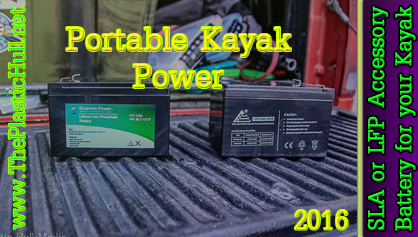Lowrance Elite 5 TI TotalScan Kayak Install for Jackson Kayak Big Rig
 Luckily the Jackson Kayak Big Rig has factory molded scuppers that accept large transducers like the Raymarine Dragonfly. Although the Lowrance Elite 5 TI TotalScan transducer is over 10″ long it mounts in pretty flush on the Jackson Kayak Big Rig with some modifications.
Luckily the Jackson Kayak Big Rig has factory molded scuppers that accept large transducers like the Raymarine Dragonfly. Although the Lowrance Elite 5 TI TotalScan transducer is over 10″ long it mounts in pretty flush on the Jackson Kayak Big Rig with some modifications.
TotalScan Kayak Scupper Transducer Install & Mods:
 I had to flip the mounting bracket upside down then mount the transducer to bracket. This allowed an extra 1/4″ of space so the transducer mounted closer to the hull and more flush inside the scupper trough.
I had to flip the mounting bracket upside down then mount the transducer to bracket. This allowed an extra 1/4″ of space so the transducer mounted closer to the hull and more flush inside the scupper trough.
Transducer mounting bracket cable notch modification. (Optional)
 I opted to notch out the mounting bracket to receive the transducer cable flush. Doing this allowed me to install the transducer with the wire forward. I figured the less exposed cable the more protected it would be to objects in the water damaging it. Simply I marked with a sharpie marker the center and width of the cable. Using a vise and an angle grinder to notch in a space for the cable to pass through.
I opted to notch out the mounting bracket to receive the transducer cable flush. Doing this allowed me to install the transducer with the wire forward. I figured the less exposed cable the more protected it would be to objects in the water damaging it. Simply I marked with a sharpie marker the center and width of the cable. Using a vise and an angle grinder to notch in a space for the cable to pass through.
Using the Lowrance Kayak Scupper Mounting Kit. With a simple modification using a bolt and about 6 washers you can pack out the middle of the bracket to sit flush on the transom bracket. See the image below.
A Big Rig application.
To secure the transducer so it will not move at all add bungee to hold cantilevered end taught to the hull.The bungee will pass through the scupper behind the actual mounting plate. Using a scrap piece of plastic drill with a hole saw to create a tie down plug. Then pass through the bungee and tie a knot this will hold the transducer taught in the scupper. I ran the new transducer wire through the same thru hull holes as the HDI skimmer location.
















